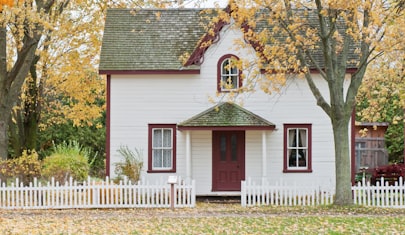The housing market is a dynamic ecosystem influenced by a myriad of factors, ranging from economic conditions to societal shifts. As we traverse the complexities of 2024, it's imperative to understand the pulse of the current housing market. In this blog post, we'll delve into the prevailing trends, challenges, and opportunities shaping the landscape for homebuyers, sellers, and renters alike.
Trends:
-
Supply and Demand Dynamics: The housing market continues to grapple with a persistent imbalance between supply and demand. Demand remains robust, fueled by factors such as low mortgage rates, demographic shifts, and lifestyle changes spurred by the pandemic. However, supply constraints, including limited inventory and sluggish construction activity, have resulted in intensified competition among buyers and upward pressure on prices.
-
Rising Home Prices: Across many regions, home prices have soared to record highs, outpacing income growth and affordability thresholds. This surge in prices has been driven by a combination of factors, including limited inventory, strong demand from buyers seeking more space, and speculative investment activity. As a result, affordability concerns have become increasingly pronounced, particularly for first-time buyers and middle-income households.
-
Shifts in Housing Preferences: The pandemic has catalyzed shifts in housing preferences, with a growing emphasis on space, privacy, and amenities conducive to remote work and lifestyle flexibility. Suburban and rural areas have witnessed heightened demand as buyers prioritize larger homes, outdoor space, and community amenities over proximity to urban centers. Additionally, features like home offices, gyms, and outdoor living areas have surged in popularity, reflecting evolving lifestyle priorities.
Challenges:
-
Affordability Constraints: Escalating home prices, coupled with stagnant wages, have posed significant affordability challenges for prospective homebuyers, particularly millennials and low-to-moderate-income households. Affordability constraints not only hinder access to homeownership but also exacerbate disparities in wealth accumulation and housing stability.
-
Inventory Shortages: Persistent inventory shortages continue to constrain options for buyers, leading to heightened competition, bidding wars, and rapid price appreciation in many markets. Limited inventory, exacerbated by factors such as labor shortages, supply chain disruptions, and regulatory barriers, poses a significant hurdle for those seeking to enter the housing market.
-
Rental Market Pressures: While homeownership remains a cornerstone of the American Dream, the rental market faces its own set of challenges. Rental affordability concerns, exacerbated by rising housing costs and stagnant incomes, have contributed to a growing population of cost-burdened renters, impacting financial security and housing stability for millions of households.
Opportunities:
-
Innovations in Housing Finance: Innovations in housing finance, including alternative mortgage products, down payment assistance programs, and shared equity arrangements, hold promise for expanding access to homeownership and addressing affordability challenges. Collaborative efforts between public and private stakeholders can foster innovative solutions to promote sustainable homeownership opportunities for underserved communities.
-
Investment in Affordable Housing: Increasing investment in affordable housing initiatives, such as the construction of subsidized housing units, preservation of existing affordable housing stock, and incentivizing mixed-income development, can help alleviate affordability pressures and create more inclusive communities.
-
Adaptive Reuse and Revitalization: Adaptive reuse and revitalization projects offer opportunities to repurpose underutilized properties, revitalize distressed neighborhoods, and expand housing options in urban and suburban areas. By leveraging existing infrastructure and reimagining space for residential use, these initiatives contribute to community revitalization efforts while addressing housing demand.
As we navigate the complexities of the current housing market, it's essential to recognize both the challenges and opportunities that shape its trajectory. Addressing affordability concerns, expanding housing options, and fostering inclusive growth require a multifaceted approach that prioritizes collaboration, innovation, and equitable access to housing opportunities. By embracing these principles, we can work towards building a housing market that serves the needs of all individuals and communities, fostering resilience and prosperity for generations to come.



